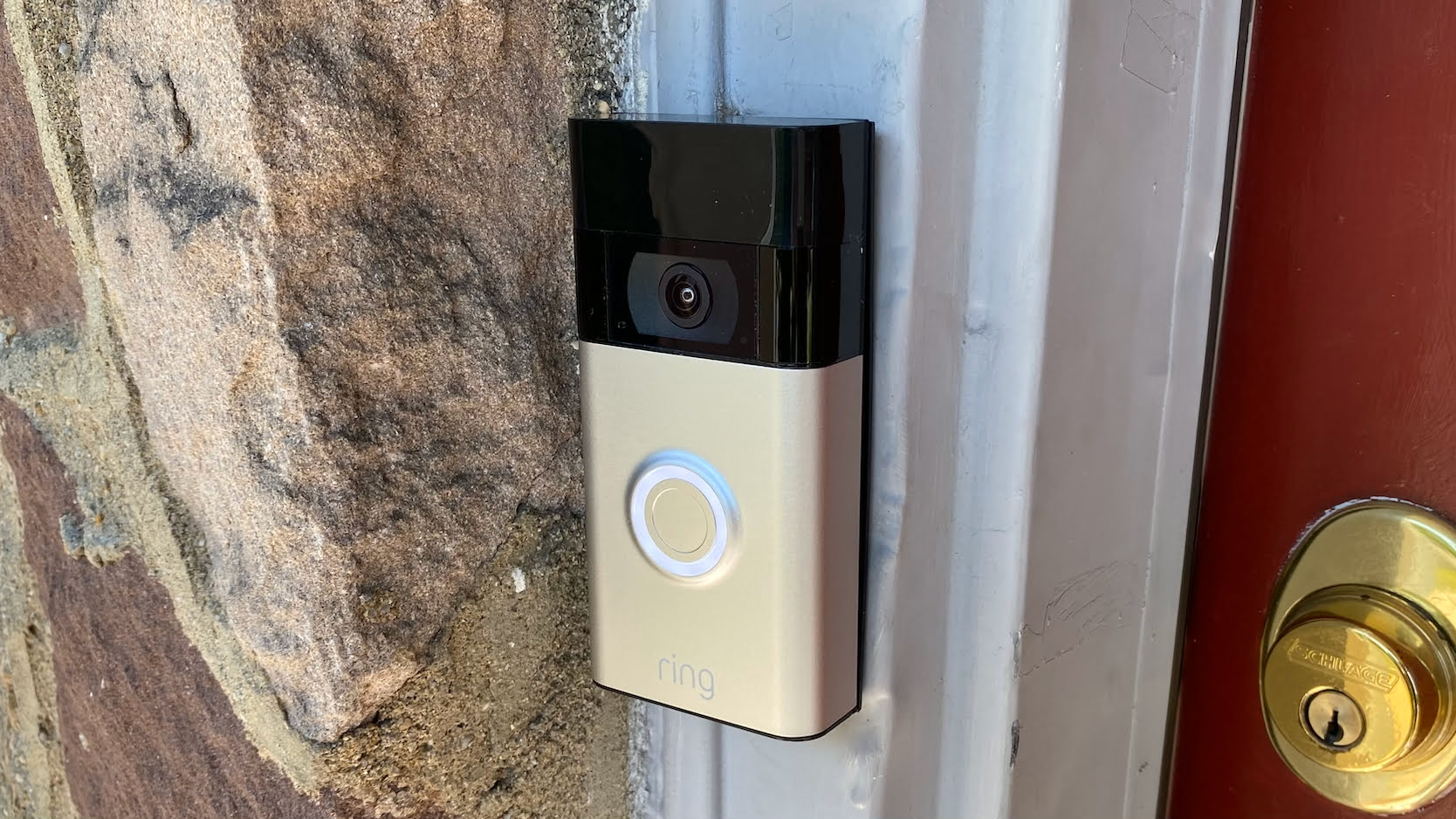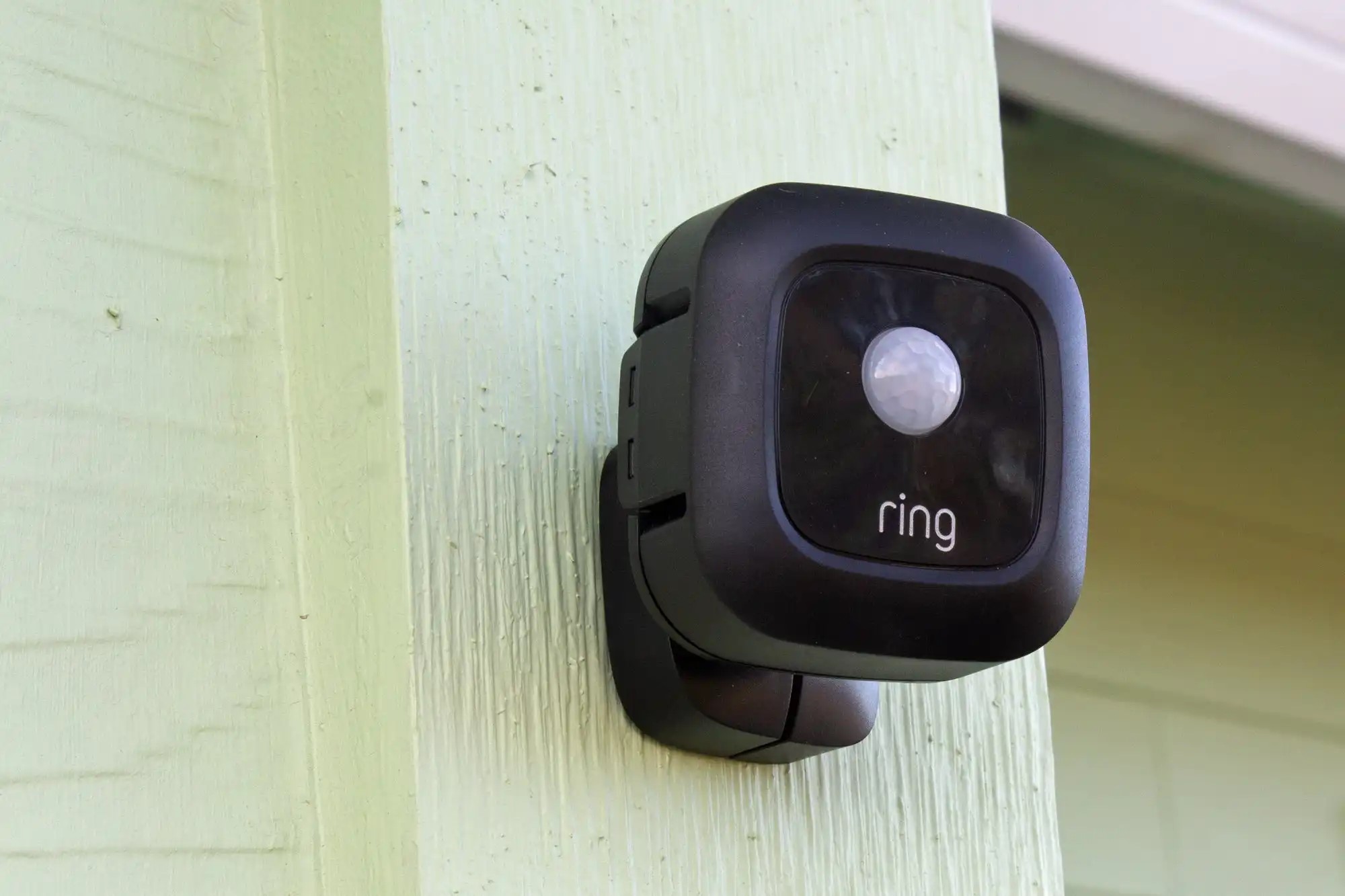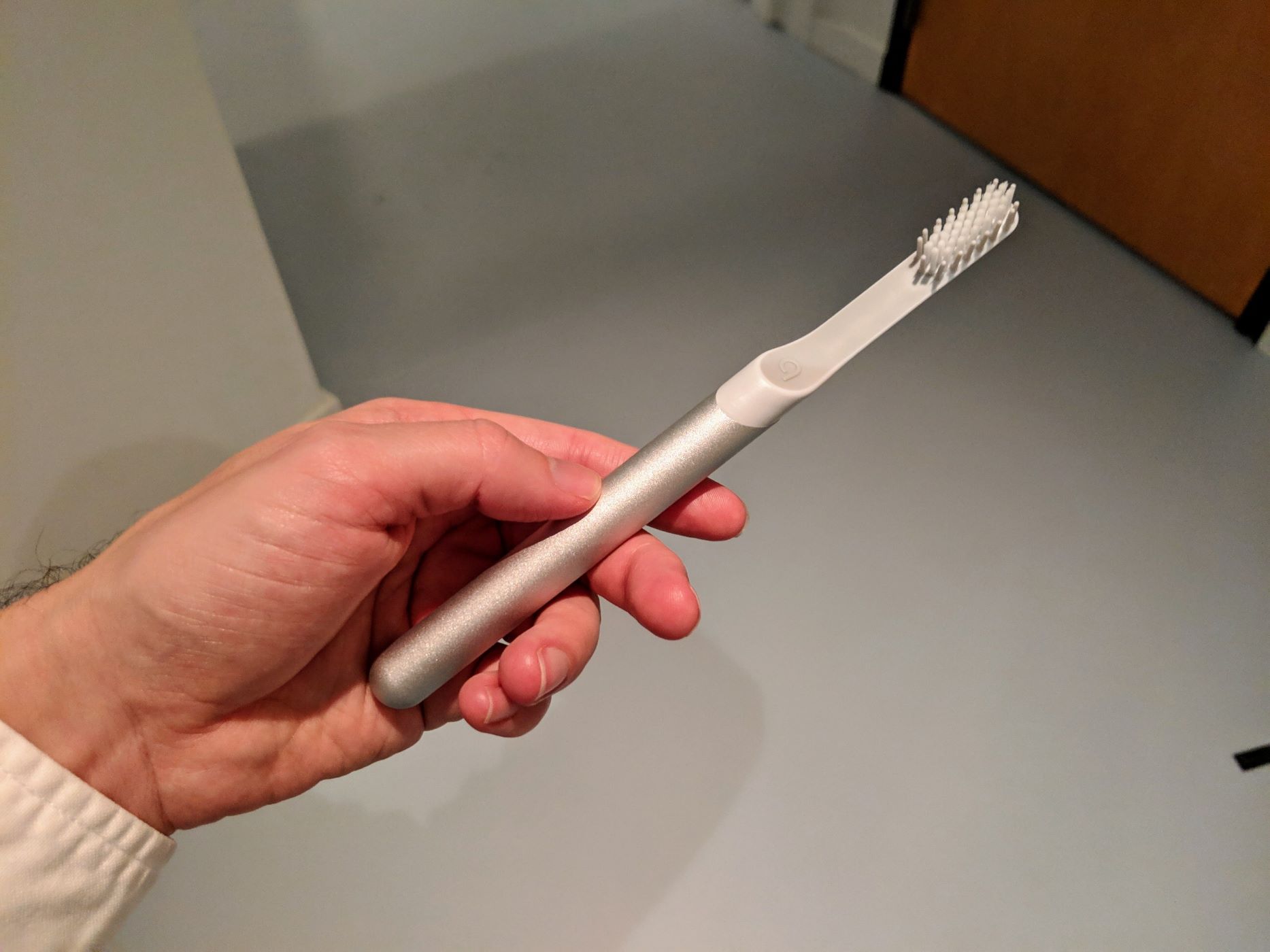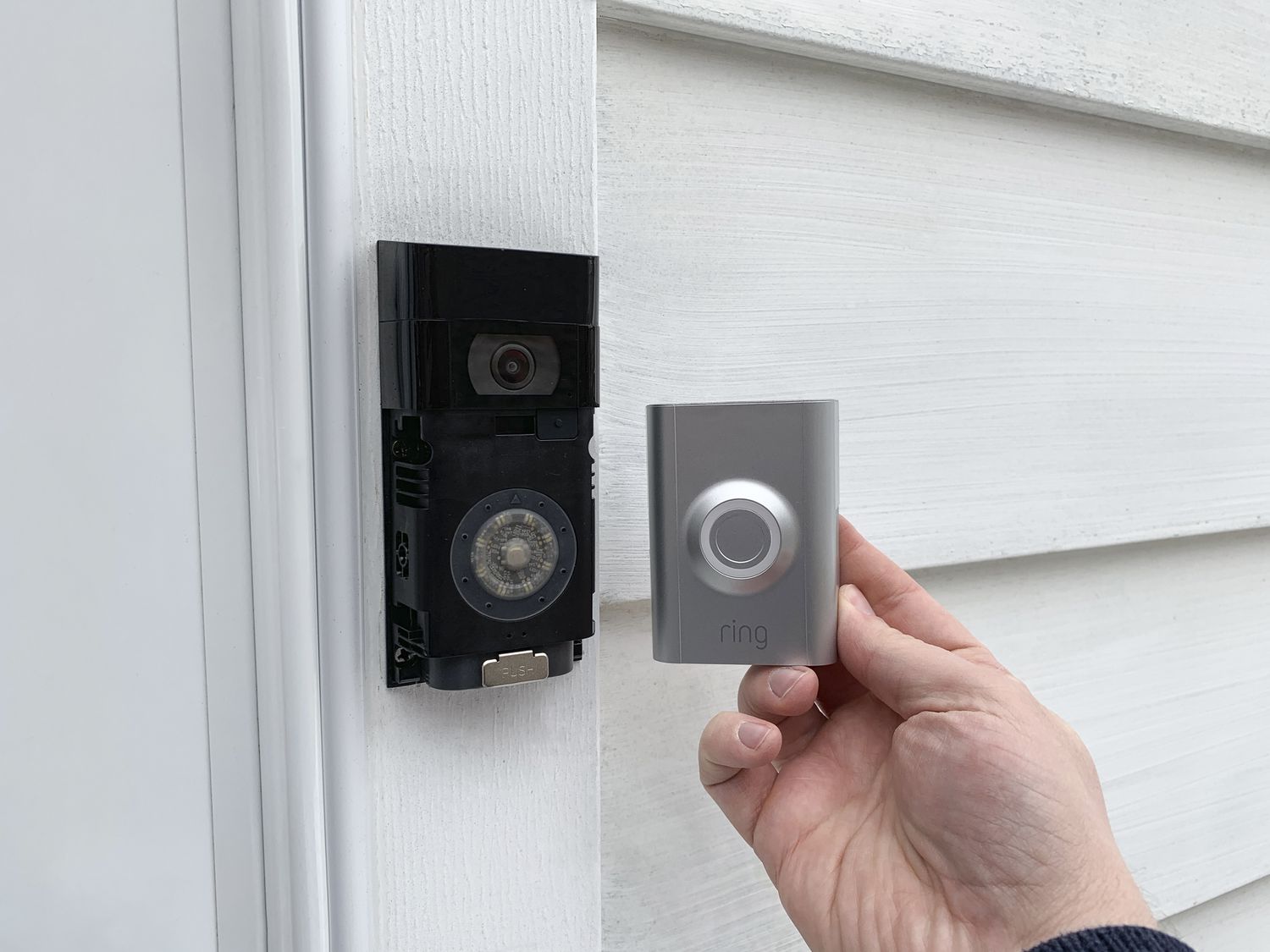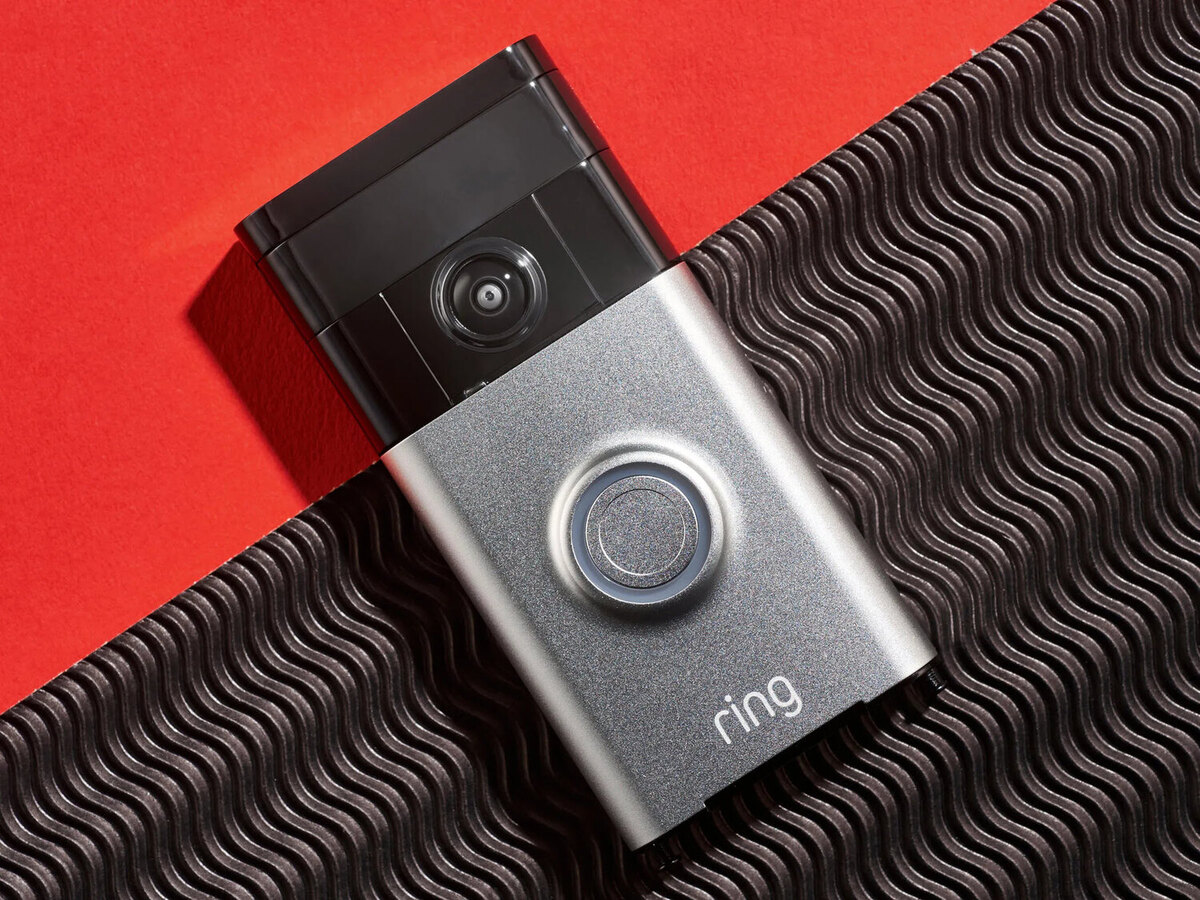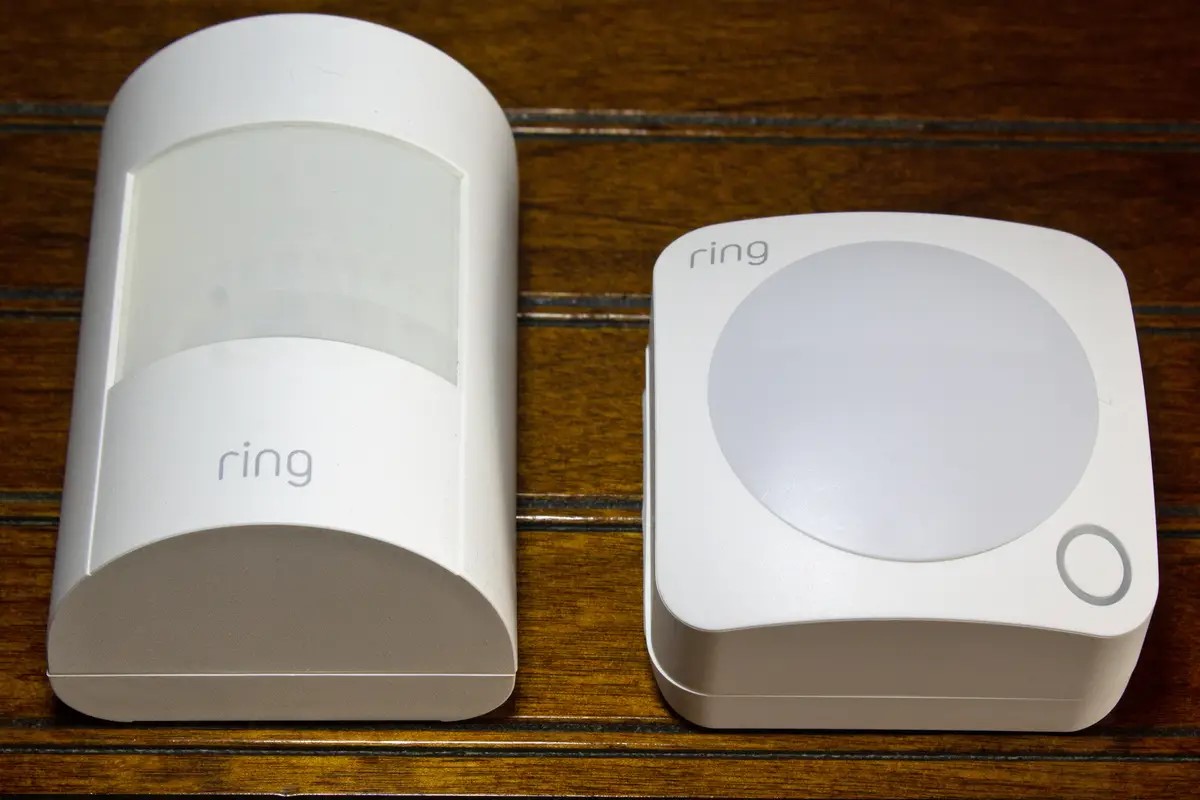Home>Home Security and Surveillance>Why Did The Motion Detector On Ring Doorbell Stop Working
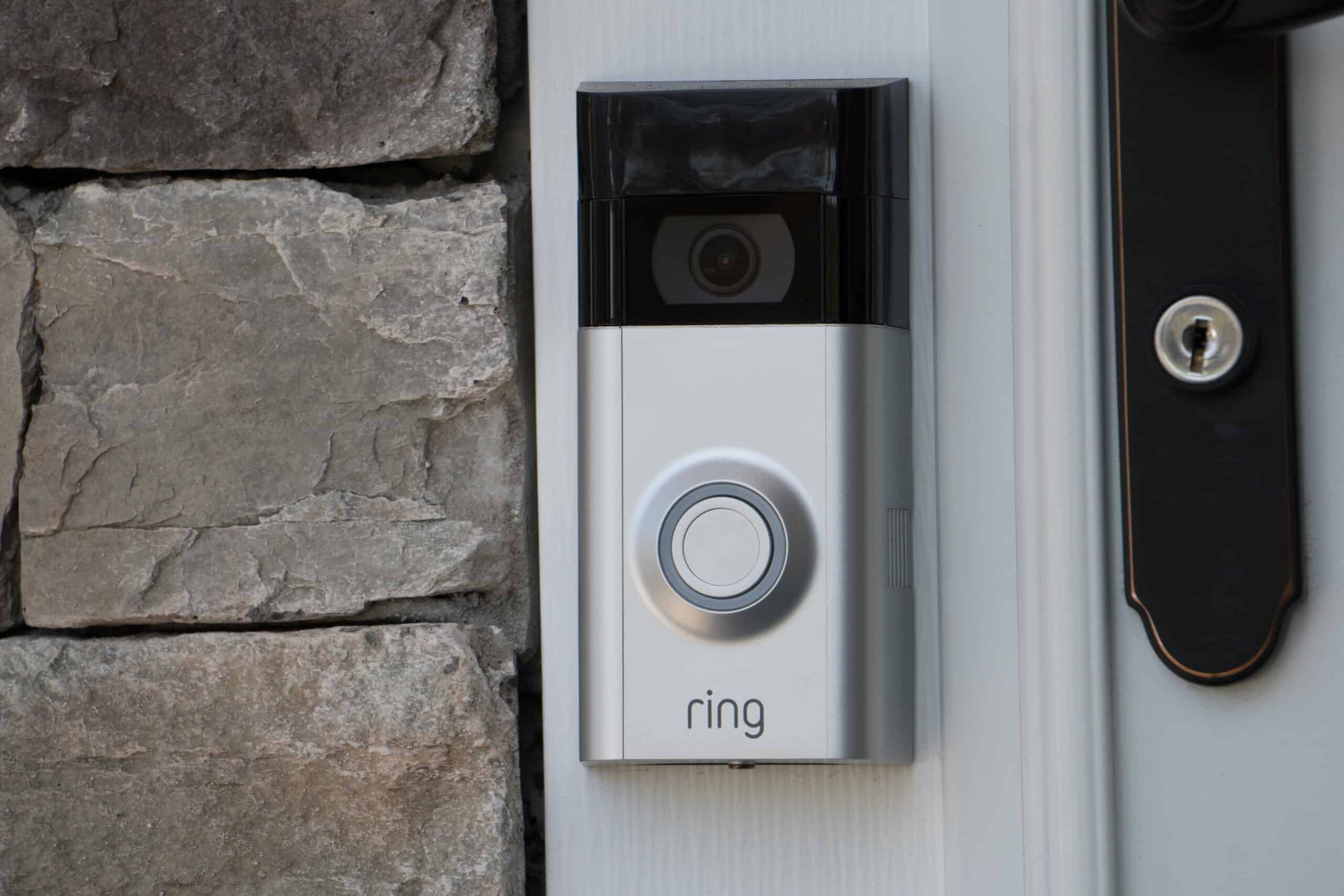

Home Security and Surveillance
Why Did The Motion Detector On Ring Doorbell Stop Working
Modified: March 7, 2024
Discover the reasons why the motion detector on your Ring doorbell suddenly stopped working. Learn how to troubleshoot and fix it to maintain optimal home security and surveillance.
(Many of the links in this article redirect to a specific reviewed product. Your purchase of these products through affiliate links helps to generate commission for Storables.com, at no extra cost. Learn more)
Introduction
Welcome to our comprehensive guide on why the motion detector on your Ring Doorbell may have stopped working. As a homeowner, ensuring the safety and security of your property is of utmost importance, and a reliable motion detector is a key component of any home security system. Unfortunately, issues with the motion detector can arise, leading to potential vulnerability in your surveillance setup.
In this article, we will explore the common causes for motion detector failure and provide you with troubleshooting steps to resolve the issue. Understanding why your motion detector stopped working will enable you to take the necessary steps to rectify the situation and restore proper functionality to your Ring Doorbell.
Before we dive into troubleshooting, it is important to note that the Ring Doorbell utilizes advanced technology to detect motion and provide real-time notifications. However, like any electronic device, it is susceptible to various factors that can affect its performance. By identifying and addressing these factors, you can ensure that your home security system remains at its peak efficiency.
Key Takeaways:
- Ensure your Ring Doorbell’s motion detector works by checking power, Wi-Fi, sensor alignment, sensitivity settings, firmware updates, and environmental factors. If issues persist, reach out to Ring’s customer support for personalized assistance.
- Regularly maintain and troubleshoot your Ring Doorbell’s motion detector to ensure optimal performance. Simple steps like cleaning the camera lens and adjusting sensitivity settings can make a big difference in your home security.
Read more: Why Did My Blender Stop Working
Common Causes for Motion Detector Failure
When the motion detector on your Ring Doorbell stops working, it can be frustrating and leave you wondering what went wrong. However, there are several common causes for motion detector failure that you should be aware of. By understanding these causes, you can troubleshoot effectively and get your motion detector back up and running.
1. Power Issues: One of the most common causes of motion detector failure is a power-related issue. Ensure that your Ring Doorbell is receiving adequate power by checking the battery level or the wiring connection if it is hardwired. A drained battery or a loose wire can result in the motion detector not functioning properly.
2. Wi-Fi Connection Problems: A stable Wi-Fi connection is crucial for the proper functioning of your Ring Doorbell’s motion detector. If you are experiencing connectivity issues or a weak signal, it may affect the communication between the doorbell and the app, causing the motion detector to stop working. Try moving your router closer to the doorbell or consider upgrading your internet plan for a stronger connection.
3. Sensor Alignment Problems: The motion detector on the Ring Doorbell relies on infrared sensors to detect movement. If the sensors are misaligned or obstructed, it can lead to false alarms or missed motion events. Ensure that the sensors are clean and free of any dirt or debris. Adjust the sensor sensitivity settings if necessary.
4. Motion Sensitivity Adjustments: Sometimes, the motion sensitivity settings on your Ring Doorbell may have been inadvertently changed, causing the motion detector to be too sensitive or not sensitive enough. Check the app settings and adjust the motion sensitivity to a level that suits your needs.
5. Firmware Updates: Ring regularly releases firmware updates to improve the performance and functionality of their devices. If you have not updated your Ring Doorbell to the latest firmware version, it may cause compatibility issues and affect the motion detector’s operation. Check for any available updates in the Ring app and install them accordingly.
These are just a few of the common causes for motion detector failure on the Ring Doorbell. It is important to consider each of these factors and investigate them thoroughly before moving on to the troubleshooting steps. Having a clear understanding of these causes will help you diagnose and resolve the issue more effectively.
Power Issues
One of the most common causes of motion detector failure on your Ring Doorbell is related to power issues. Whether your device is battery-powered or hardwired, it’s important to ensure that sufficient power is reaching the motion detector for it to function properly.
If your Ring Doorbell is battery-powered, start by checking the battery level in the Ring app. A low battery can cause the motion detector to stop working or become unreliable. If the battery level is low, recharge or replace the battery as needed. Additionally, ensure that the battery is inserted correctly and securely in the device.
For hardwired Ring Doorbells, ensure that the wiring is correctly connected and that the power source is functioning. Check the power circuit breaker or fuse box in your home to make sure there are no issues. If necessary, consult a professional electrician to verify the wiring connection and ensure proper power supply to the doorbell.
It’s worth noting that extreme temperatures can also affect the performance of the battery in your Ring Doorbell. In cold weather, the battery may drain faster, while in hot weather, it may struggle to retain a charge. If you live in an area with severe temperatures, consider investing in additional accessories, such as a solar charger or a battery pack, to help mitigate these power-related issues.
In addition to power supply, it’s important to keep the contacts and charging port on your Ring Doorbell clean. Over time, dust, debris, or rust can accumulate and compromise the electrical connection. Gently wipe the contacts and charging port using a soft cloth and ensure they are free of any obstructions.
Regularly monitoring the power supply and keeping the battery charged or the hardwired connection in good condition will help prevent power-related issues and ensure the proper functioning of the motion detector on your Ring Doorbell.
Wi-Fi Connection Problems
A stable Wi-Fi connection is essential for the proper functioning of the motion detector on your Ring Doorbell. If you are experiencing issues with your Wi-Fi connection, it can directly impact the performance of the motion detector, causing it to stop working or become unreliable.
Start by checking the Wi-Fi signal strength in the area where your Ring Doorbell is installed. A weak signal can result in communication issues between the doorbell and the app, leading to problems with the motion detector. Consider moving your Wi-Fi router closer to the doorbell to improve the signal strength, or install a Wi-Fi extender to boost the signal in that area.
Another potential cause for Wi-Fi connection problems is network congestion. If there are multiple devices connected to your Wi-Fi network, it can affect the bandwidth available for the Ring Doorbell, potentially leading to connectivity issues and motion detector failure. Try disconnecting any unnecessary devices or consider upgrading your internet plan to accommodate the increased data traffic.
Interference from other electronic devices can also disrupt the Wi-Fi connection and affect the motion detector’s functionality. Devices such as cordless phones, baby monitors, microwave ovens, and even neighboring Wi-Fi networks can interfere with the signal. Try relocating or adjusting the position of these devices, or change the Wi-Fi channel on your router to minimize interference.
Another troubleshooting step is to reset the Wi-Fi connection on your Ring Doorbell. In the Ring app, go to the device settings and select the option to reconnect the doorbell to your Wi-Fi network. Follow the on-screen instructions to complete the process. This can help resolve any temporary connectivity issues that may have been affecting the motion detector.
Lastly, ensure that your Ring Doorbell firmware is up to date. Ring periodically releases firmware updates to improve device performance and address connectivity issues. Check for any available updates in the Ring app and install them accordingly to ensure compatibility and maximize Wi-Fi performance.
By addressing these potential Wi-Fi connection problems, you can restore the proper functionality of the motion detector on your Ring Doorbell and ensure seamless communication between the device and the app.
Sensor Alignment Problems
The motion detector on your Ring Doorbell relies on infrared sensors to detect movement. If these sensors are misaligned or obstructed, it can result in false alarms or missed motion events. Sensor alignment problems are a common cause of motion detector failure and can be easily addressed with a few simple steps.
Start by visually inspecting the sensors on your Ring Doorbell. Ensure that they are clean and free from any dirt, dust, or debris. Use a soft cloth or a cotton swab to gently clean the sensors, being careful not to damage them in the process. Dirt or obstructions on the sensors can interfere with their ability to detect motion accurately.
If the sensors appear to be clean, check their alignment. The sensors should be facing outward and should not be obstructed by any objects, such as vegetation or decorations. Trim any overgrown foliage or rearrange any objects that may be blocking the sensors’ field of view. This will ensure that they have a clear line of sight to detect motion effectively.
Additionally, verify that the sensor sensitivity settings on your Ring Doorbell are properly configured. In the Ring app, navigate to the device settings and adjust the motion sensitivity to a level that suits your needs. If the sensitivity is set too low, it may fail to detect motion, while setting it too high can result in false alarms triggered by minor movements such as passing cars or small animals.
It’s important to note that environmental factors, such as strong sunlight or heavy rain, can affect motion detection performance. Bright sunlight or direct exposure to rain can interfere with the infrared sensors, leading to inaccurate readings. Consider adjusting the positioning of your Ring Doorbell or install a motion detector shield to minimize the impact of these environmental factors on the sensors.
If you’ve tried all the steps above and are still experiencing sensor alignment problems, you may need to reach out to Ring’s customer support for further assistance. They can help troubleshoot the issue and provide additional guidance to get your motion detector back to optimal functionality.
By addressing sensor alignment problems, you can ensure that the motion detector on your Ring Doorbell functions accurately, providing you with peace of mind and enhanced security for your home.
Motion Sensitivity Adjustments
The motion sensitivity settings on your Ring Doorbell play a crucial role in the proper functioning of the motion detector. Adjusting these settings allows you to fine-tune the level of sensitivity to ensure that the device detects motion accurately without triggering false alarms.
Start by accessing the Ring app and navigating to the device settings for your Ring Doorbell. Look for the motion sensitivity options and review the current settings. Depending on the model of your doorbell, you may have different sensitivity levels to choose from, ranging from low to high.
If you find that your motion detector is not picking up enough motion events, try increasing the sensitivity level. This will make the device more responsive to even the slightest movements, ensuring that no activity goes unnoticed. However, be cautious not to set the sensitivity too high, as this can lead to false positives triggered by non-threatening movements, such as trees swaying or passing cars.
Conversely, if you are receiving an excessive number of false alarms or notifications for minor movements, you may need to decrease the sensitivity. By lowering the sensitivity level, the motion detector will be less prone to trigger false positives and will focus on capturing more significant activity that you are interested in, such as people approaching your doorstep.
Experiment with different sensitivity levels and monitor the motion events to find the optimal setting for your specific needs. It’s important to strike a balance that captures important events while minimizing false alarms. Keep in mind that the ideal sensitivity level may vary depending on factors such as the location, surroundings, and your personal preferences.
Additionally, the Ring app provides advanced motion detection settings that allow you to define specific zones where you want the motion detector to be active. This feature is particularly useful if you have areas that you want to exclude from motion detection, such as a busy street or a tree that constantly sways in the wind. By customizing the motion detection zones, you can further refine the accuracy of your motion detector.
Regularly assess and adjust the motion sensitivity settings on your Ring Doorbell to ensure optimal performance and minimize false alarms. By finding the right balance, you can rely on your motion detector to provide accurate notifications and enhance your home security system.
Check the power source and Wi-Fi connection for the Ring doorbell. Make sure it’s getting enough power and has a strong Wi-Fi signal for the motion detector to work properly.
Firmware Updates
Keeping your Ring Doorbell’s firmware up to date is crucial for maintaining optimal performance and resolving any potential issues, including motion detector failure. Ring regularly releases firmware updates to improve device functionality, address bugs, and enhance security features.
To check for firmware updates, open the Ring app on your smartphone and navigate to the device settings for your Ring Doorbell. Look for the firmware update section and follow the prompts to check for any available updates. If an update is available, proceed with installing it.
Firmware updates can address compatibility issues, improve motion detection algorithms, and enhance the overall performance of your Ring Doorbell’s motion detector. By staying up to date with the latest firmware, you can ensure that your device functions at its best and benefits from any new features or optimizations.
It’s important to have a stable internet connection while updating the firmware. If your Ring Doorbell is battery-powered, make sure the battery level is sufficient to complete the update process. If your device is hardwired, ensure that the power supply is uninterrupted during the update.
While firmware updates are generally straightforward, it’s always a good practice to follow the installation instructions provided by the Ring app. Allow sufficient time for the update to complete, and avoid interrupting the process by disconnecting power or closing the app prematurely.
By regularly checking for and installing firmware updates, you can ensure that your Ring Doorbell’s motion detector remains up to date with the latest advancements. This will help maximize the device’s performance, improve accuracy in motion detection, and address any potential software-related issues that may be affecting the motion detector’s functionality.
If you have followed the firmware update process and are still experiencing motion detector failure, it may be worth reaching out to Ring’s customer support for further assistance. They can provide additional guidance and troubleshoot the issue to ensure the proper functioning of your motion detector.
Remember, firmware updates are a vital part of maintaining a reliable and efficient motion detector on your Ring Doorbell. Stay proactive in updating your device and enjoy the enhanced functionality and performance it brings to your home security system.
Camera Lens Obstructions
The camera lens on your Ring Doorbell plays a crucial role in capturing clear and accurate video footage. However, obstructions on the lens can hinder its performance and lead to issues with the motion detector. It is essential to ensure that the camera lens is clean and unobstructed for optimal functionality.
Start by visually inspecting the camera lens on your Ring Doorbell. Look for any dirt, smudges, or obstructions that may be affecting the lens’ ability to capture clear images. If you notice any dirt or smudges, gently clean the lens using a microfiber cloth or a lens cleaning solution. Avoid using abrasive materials or harsh chemicals that could damage the lens.
Next, check for any physical obstructions that may be blocking the camera’s field of view. Over time, debris such as spiderwebs, dust, or vegetation can accumulate around the camera lens, obstructing its visibility and potentially interfering with the motion detector’s accuracy. Safely remove any obstructions using a soft brush or cloth to clear the area around the lens.
In some cases, the lens may be obstructed by condensation or fogging. This can occur due to changes in temperature or humidity levels. If you notice fogging or condensation on the lens, wait for it to naturally dissipate. In most cases, this happens as the temperature and humidity equalize. Avoid wiping the lens or using external heat sources to accelerate the process, as this can cause damage to the device.
Additionally, consider the positioning of your Ring Doorbell. Ensure that it is installed at the correct angle to provide an unobstructed view of the monitored area. Adjust the mounting angle if necessary to optimize the camera’s line of sight and maximize its effectiveness in detecting motion.
Regularly inspect the camera lens on your Ring Doorbell and remove any obstructions or clean any dirt or smudges that may affect its performance. By maintaining a clear and unobstructed lens, you can ensure that the motion detector functions accurately and provides you with reliable video footage of any detected motion events.
Environmental Factors
Environmental factors can have a significant impact on the performance of the motion detector on your Ring Doorbell. Understanding and addressing these factors can help ensure that the motion detector functions accurately and reliably.
One common environmental factor that can affect motion detection is intense sunlight. Direct sunlight can cause excessive heat, which can impact the sensitivity and accuracy of the motion detector. Consider the positioning of your Ring Doorbell and make adjustments if necessary to minimize direct exposure to sunlight. This can help prevent false alarms and ensure that the motion detector operates optimally.
On the other hand, extreme cold temperatures can also affect the performance of the motion detector. In subzero temperatures, the battery life may decrease, leading to decreased motion detection sensitivity or even the complete failure of the device. If you live in an area with freezing temperatures, consider using additional accessories such as a battery pack or a solar charger to help maintain optimal power supply to the device.
Weather conditions such as rain, snow, or fog can also impact motion detection. Heavy precipitation or thick fog can interfere with the infrared sensors, affecting their ability to accurately detect motion. In such cases, adjusting the sensitivity settings or using a motion detection shield can help minimize false alarms caused by inclement weather conditions.
Furthermore, consider the presence of natural elements that may interfere with motion detection. Trees, bushes, or other vegetation near the field of view of the Ring Doorbell’s camera can trigger false positives as they sway in the wind. Regularly trim and maintain any vegetation to prevent it from obstructing the camera’s view or triggering unnecessary motion alerts.
Lastly, keep in mind that the proximity of your Ring Doorbell to sources of potential interference, such as electrical or wireless devices, can impact motion detection performance. Devices like wireless speakers, routers, or even neighboring Wi-Fi networks can generate electromagnetic interference that may affect the motion detector’s reliability. Adjust the placement of your Ring Doorbell if you suspect interference from nearby devices.
By being mindful of environmental factors and making necessary adjustments, you can optimize the performance of the motion detector on your Ring Doorbell. This will ensure accurate motion detection and reliable home security surveillance, providing you with the peace of mind you deserve.
Read more: How Does The Motion Detector Work On Ring 2
Troubleshooting Steps
If you have tried everything mentioned earlier and are still experiencing issues with the motion detector on your Ring Doorbell, there are several troubleshooting steps you can take to identify and resolve the problem. Follow these steps to get your motion detector back up and running:
- Restart your Ring Doorbell: Sometimes, a simple restart can resolve temporary glitches or software issues. In the Ring app, go to the device settings and select the option to restart the doorbell. Allow the device a few moments to reboot and check if the motion detector starts working again.
- Reset your Ring Doorbell: If restarting doesn’t solve the problem, you can try resetting your device to its factory settings. Keep in mind that resetting will remove all personalized settings and configurations. In the Ring app, navigate to the device settings and follow the instructions for resetting the doorbell. Set it up again from scratch and check if the motion detector resumes normal operation.
- Check for app updates: Ensure that you have the latest version of the Ring app installed on your smartphone or tablet. App updates often include bug fixes and performance improvements that can resolve issues with the motion detector. Visit your device’s app store to check for any available updates.
- Check the internet connection: Confirm that your smartphone or tablet is connected to a stable internet connection. A weak or intermittent connection can affect the communication between the app and your Ring Doorbell, leading to motion detector failure. Switch to a different network or move closer to your Wi-Fi router to test if the issue persists.
- Contact Ring support: If you’ve tried all the troubleshooting steps above and the motion detector on your Ring Doorbell still doesn’t work, it may be time to reach out to Ring’s customer support. They have trained experts who can guide you through additional troubleshooting steps or provide further assistance to resolve the issue.
Remember, troubleshooting steps may vary depending on the specific model of your Ring Doorbell and the features available in the Ring app. Consult the official Ring support documentation or contact their customer support for model-specific troubleshooting information.
By following these troubleshooting steps, you can systematically identify and address any issues causing the motion detector failure. Restoring the proper functionality of the motion detector will ensure reliable surveillance and enhanced security for your home.
Conclusion
The motion detector on your Ring Doorbell is a crucial component of your home security system, providing you with peace of mind and enhanced surveillance. When it stops working, it can leave you feeling vulnerable and searching for answers. However, by understanding the common causes of motion detector failure and following the troubleshooting steps outlined in this article, you can effectively diagnose and resolve the issue.
Power issues, Wi-Fi connection problems, sensor alignment problems, motion sensitivity adjustments, firmware updates, camera lens obstructions, and environmental factors can all contribute to motion detector failure. By addressing these factors and taking appropriate measures to rectify the situation, you can restore the proper functionality of the motion detector on your Ring Doorbell.
Ensuring that your Ring Doorbell is receiving adequate power, maintaining a stable Wi-Fi connection, checking sensor alignment and sensitivity, keeping the camera lens clean and unobstructed, installing firmware updates, and addressing environmental factors will help optimize the performance of the motion detector.
If troubleshooting steps fail to resolve the issue, it is advisable to reach out to Ring’s customer support for further assistance. Their team of experts can provide personalized guidance and troubleshooting tailored to your specific situation.
Remember, maintaining a reliable and functional motion detector is essential for maximizing the security of your home. By proactively addressing any issues with the motion detector, you can ensure that your Ring Doorbell continues to serve as a reliable surveillance tool, keeping your property safe and secure.
Frequently Asked Questions about Why Did The Motion Detector On Ring Doorbell Stop Working
Was this page helpful?
At Storables.com, we guarantee accurate and reliable information. Our content, validated by Expert Board Contributors, is crafted following stringent Editorial Policies. We're committed to providing you with well-researched, expert-backed insights for all your informational needs.


